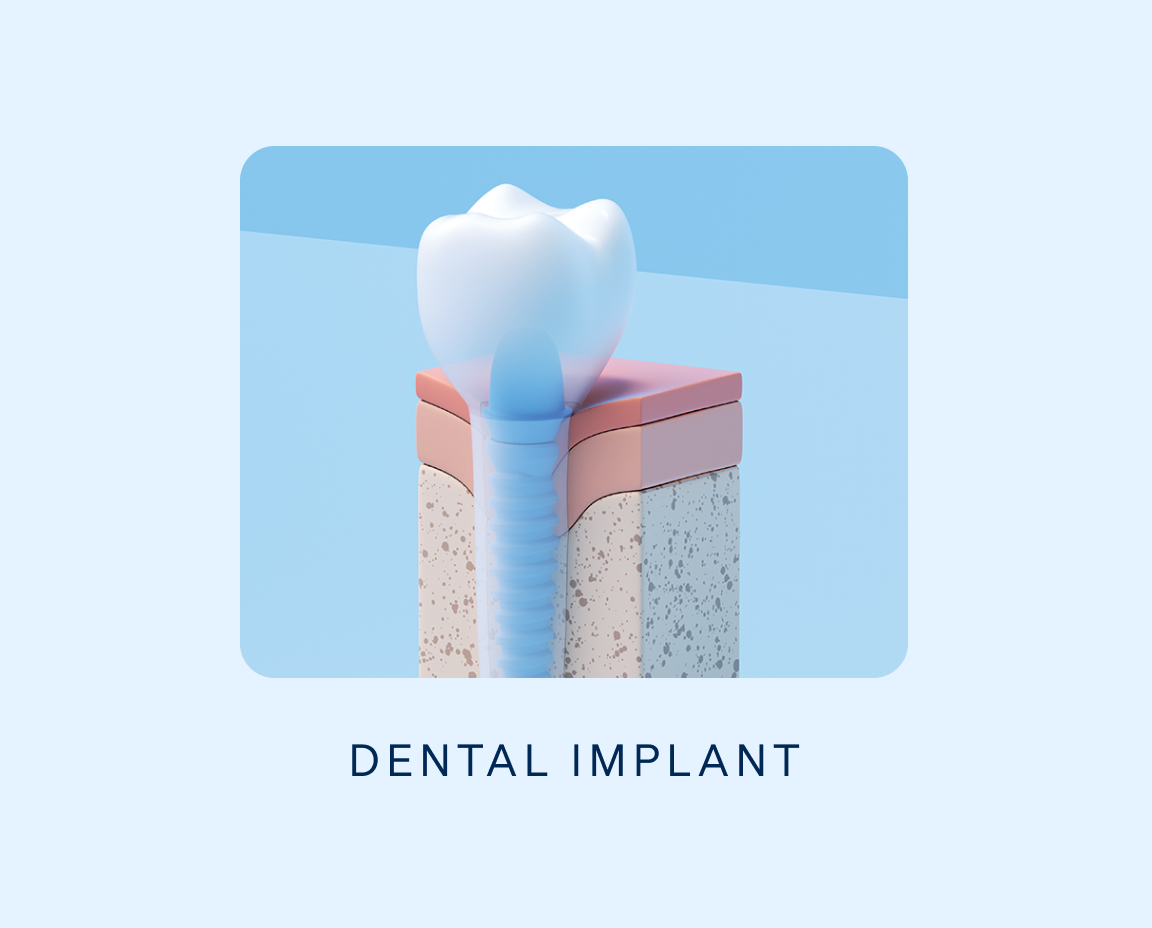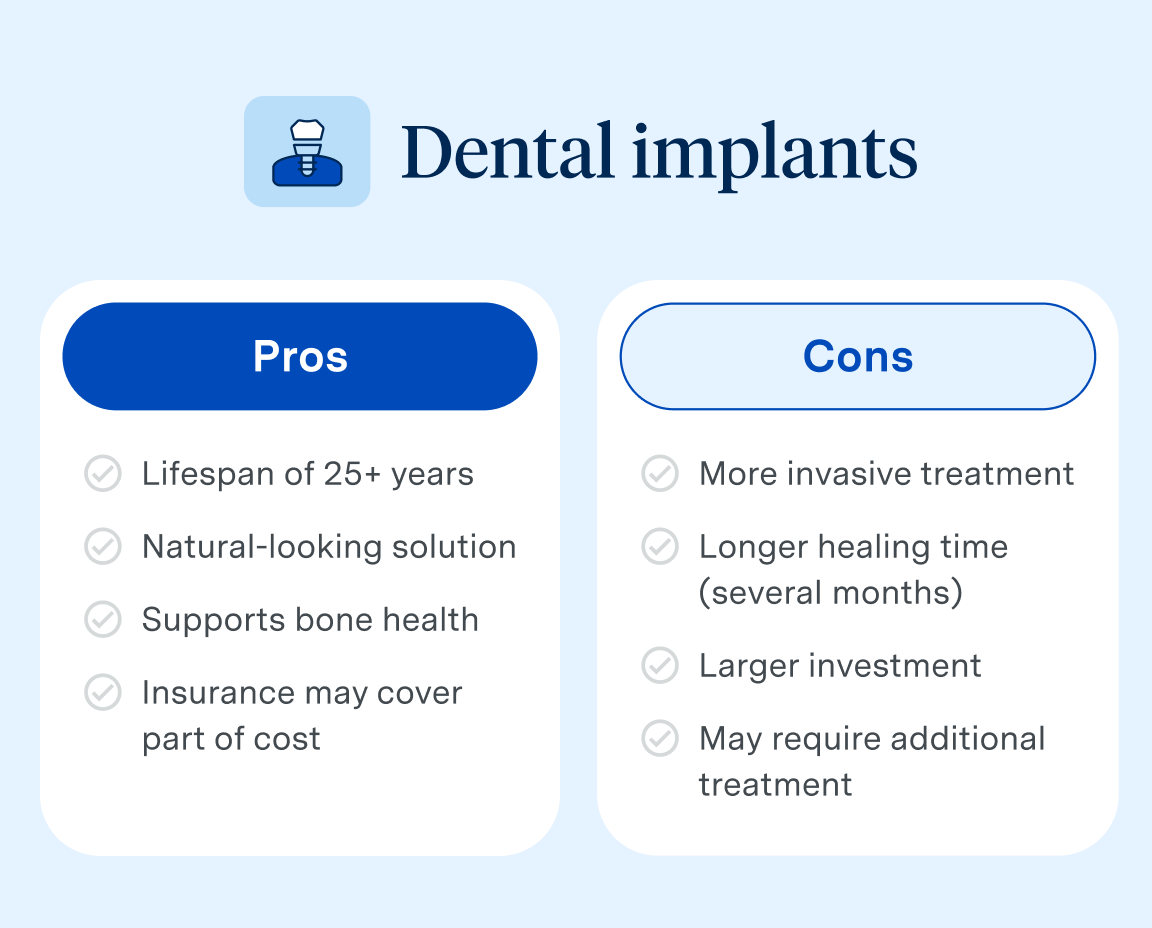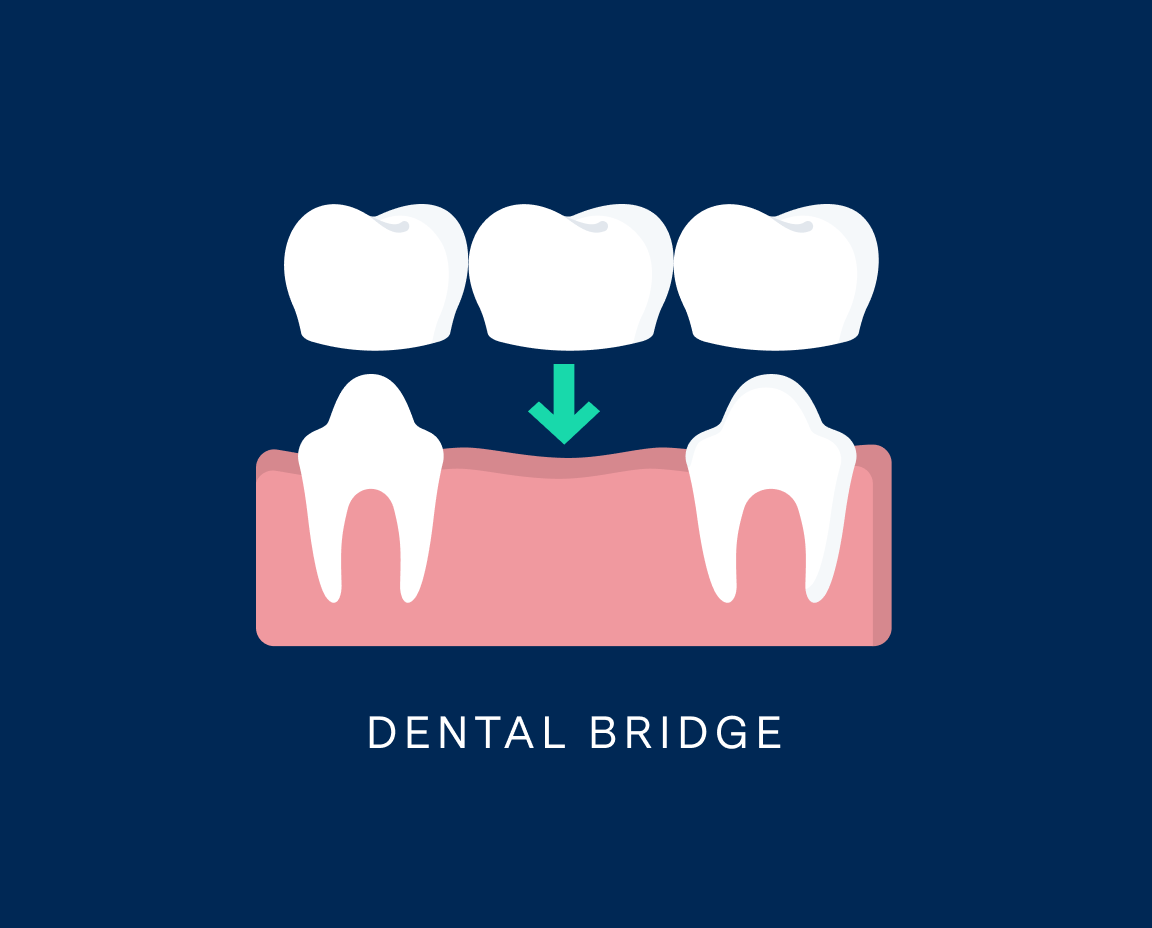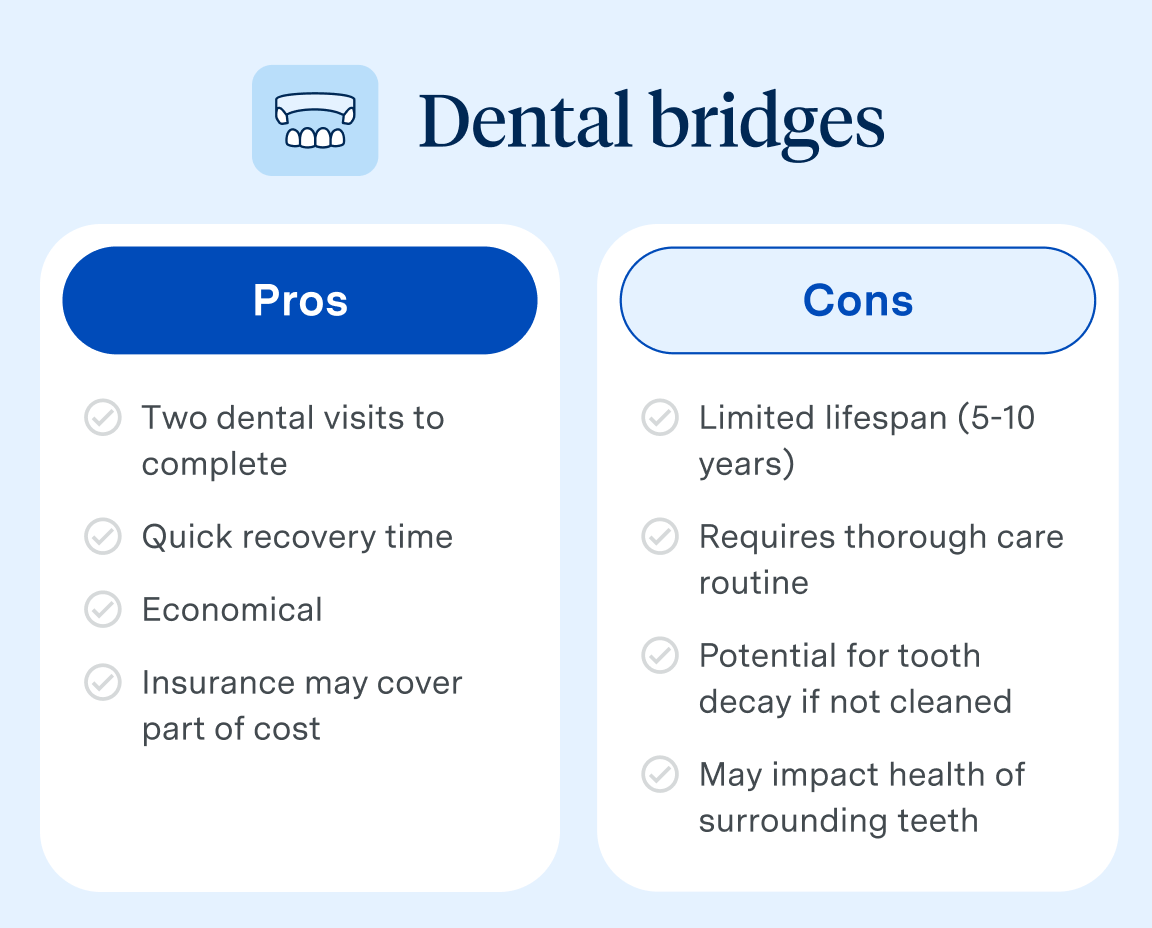Dental bridges vs. dental implants: Which is right for your smile?
Explore the differences between dental bridges and implants to understand which solution aligns with your dental goals.
When choosing between dental bridges vs. implants, it’s important to understand the pros and cons. Both are great solutions, depending on your unique smile’s needs. Here are a few things to keep in mind when making your decision.
The importance of replacing missing teeth
Having a full smile is essential when it comes to protecting your oral health. Not only does it help boost your confidence, but replacing missing teeth also helps to support your total-mouth health.
Oral functionality
Missing teeth can hinder basic functions like chewing and speaking.
Jawbone health
Tooth loss reduces jawbone density, highlighting the importance of getting dental implants to help prevent further deterioration.
Tooth shifting
Gaps cause neighboring teeth to shift, impacting your smile’s alignment.
Aesthetic concerns
Missing teeth can affect facial structure; restoration can enhance your appearance.
Speech improvement
Gaps can lead to speech difficulties; replacement can improve your speech.
Overall oral health
Missing teeth can pose plaque and gum disease risk, prompt restoration prevents complications.
Breaking down dental bridges vs. implants
Dental bridges and implants are two effective solutions that restore the functionality and feel of your smile. Although both options present their unique strengths, it’s important to understand what sets them apart so you can choose the best one for your unique dental health needs.

Dental implants
Dental implants are our most permanent smile solution. The implant base is crafted from bio-compatible titanium— meaning your new teeth are built to last. After surgically placing your dental implants, your new teeth will look, feel and function like your own.
The three parts to a dental implant
Implant
The implant, or the new tooth root, is placed beneath the surface of your gums in your jawbone for a secure fit.
Crown
The crown, or tooth, is located at the top of your implant and functions like your natural tooth.
Abutment
The abutment connects the crown to your implant, so your new teeth look and feel naturally you.

Pros and cons of dental implants
Pros
Lifespan: Enduring lifespan (25+ years) with proper care and maintenance
Feels like you: Most natural-feeling smile solution, enhances eating experience
Bone health: Supports the health of your jawbone
Insurance: Insurance may cover part of the cost of dental implants
Cons
Procedure: More invasive treatment, but does not impact surrounding teeth
Recovery time: Longer healing time (several months)
Cost: Larger investment, but potential for long-term savings
Additional treatment: May require a temporary dental restoration

Dental bridges
Dental bridges are a less invasive tooth replacement option. They’re anchored to the adjacent teeth and provide one or more replacement teeth attached to a framework.
The four types of dental bridges
Discover the four main types of dental bridges to learn which one might be right for you. Speak with your Aspen Dental dentist to create a custom care plan to support your unique dental health needs.
Traditional, fixed bridge
Traditional bridges are made up of a collection of crowns (called retainer teeth) and one or more pontics. These are artificial teeth that take the place of the missing ones. In a traditional bridge, the pontic is secured by two or more crowns.
Cantilever dental bridge
Like a traditional dental bridge, a cantilever dental bridge uses teeth on only one side to help secure the replacement tooth. Since this option is not as strong as a fixed bridge, cantilever bridges are sometimes used to fill gaps near the front of the mouth.
Maryland dental bridge
Maryland dental bridges use metal, porcelain, or ceramic wings to bind a replacement tooth to the backs of your adjoining, natural teeth. Your dentist may recommend a Maryland bridge as a temporary fix, or in the event that you aren’t the best candidate for receiving a more invasive restoration, like a dental implant.
Implant bridge
An implant bridge is a restorative option utilizing titanium fixtures surgically implanted into the jawbone to hold the bridge in place. This type of bridge provides a smile solution that is both predictable and long-lasting. Unlike other bridges, they don’t need support from the surrounding teeth. This is often the preferred solution when multiple teeth in a row are missing.

Pros and cons of dental bridges
Pros
Procedure: Can usually complete in 2 dental visits
Recovery time: Quick healing time (about two weeks)
Insurance: Insurance may cover part of the cost of dental bridges
Cons
Lifespan: Limited lifespan (5-10 years)
Oral care: Require a more thorough brushing and care routine
Additional care: Potential for tooth decay or gum disease if not properly cleaned
Potential implications: May impact the health of surrounding teeth
Dental bridges vs. implants FAQs
Is one treatment more effective than the other?
Dental implants are the longest lasting solution on the market and will support your smile for many years to come. However, when deciding on dental bridges vs. implants, it’s best to talk with your Aspen Dental dentist to discuss your unique oral health needs.
Here are a few more details to consider when choosing your smile replacement treatment.
Your budget: Although dental implants are more expensive than dental bridges, implants last longer and may be more cost-effective over time.
Your lifestyle: Dental implants are a great smile solution if you’re looking for something long-lasting and with strong chewing ability.
Your cosmetic goals: Dental implants are the most natural-looking tooth replacement option.
Your overall health: Dental implants put you at less risk of gum infection, when compared to dental bridges. Also, by assisting you in chewing correctly, implants support your ability to eat a wider variety of foods to supply your body with essential nutrients.
How long is the dental bridge recovery period compared to dental implants?
For dental implants, you should be able to return to your regular diet roughly five days post-surgery. Implant placement healing can vary from days to a few weeks. The entire healing process after your implant placement is 3-6 months, before receiving your final restoration.
Healing time for dental bridges is shorter, about 1-2 weeks. After that, the bridge starts to feel natural and comfortable.
How much do implants cost compared to bridges?
Dental implant costs can vary depending on factors like materials and procedures, but typically, the cost of implants is higher upfront than dental bridges. However, implants often provide a longer-term solution with enhanced benefits like improved stability and durability. This means it’s potentially the more cost-effective choice over time.

